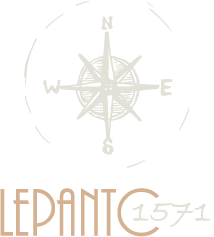Museums of the West
The battle of Lepanto in the museums of the West
The battle of Lepanto constituted a source of inspiration for artists even centuries after it took place, due to the symbolic character it acquired as a victory of Christianity over Islam. Several museums in Europe (and some even in the United States) preserve works of art, engravings and manuscripts related to the naval battle itself or its protagonists. Furthermore, several museums include amongh their exhibits real relics of the naval battle of Lepanto, banners, parts and copies of ships, artillery and uniforms of those days. These exhibits are scattered everywhere, both due to the fact that the multinational states of those days, such as the Hapsburg empire, were later divided in national states, each one of which kept a part, and due to the fact that several items initially belonged to private collections which ended up in various museums all over the world. Although a detailed cataloguing surpasses the limits of this internet site, we note here some of the most important museums and exhibits:Spain
- Biblioteca Nacional de España
-
Senate building: Juan Luna, The Battle of Lepanto, 1887
El Prado:
Tiziano, La religion socorrida por España, 1572-1575
Tiziano,
Felipe II offrando al cielo don Fernando, 1573-1575
-
Museo Naval Madrid
-Museo Naval Barcelona
- Armeria del Palacio Real de Madrid: mails, uniforms, weapons and banners of the time of the battle; among other exhibits two real banners snatched from the Ottomans during the battle.
Αustria
- Kunsthistorisches Museum, Vienna: Once the kernel of the Hapsburg Empire, Vienna hosts in its largest museum some of the items related to the battle of Lepanto, among others:
Don Juan's mail and shield
the painting“
The three victors of Lepanto” and the portrait of
Sebastiano Venier by Tintoretto, one of the masterpieces of the museum.
Italy
The Vatican:
In the gallery of maps ο Antonio Danti has painted, under order of pope Gregory XIII, a series of fresco maps of Italy, among those a depiction of the array of the battle of Lepanto.
Rome:
The funerary monument of Pope V at the Santa Maria Maggiore of Rome bears
in relief representations of the battle of Lepanto.
Venice:
Naturally, in Venice the naval battle of Lepanto was particularly praised through the art. The Venetians made sure that they were vested with the glory and the benefits of the victory. In the Palazzo Ducale, in the Sala del Scrutinio, there was a painting by Tintoretto, created right after Lepanto, but was ruined by fire in 1577 and was replaced by the painting by Andrea Vicentino. In the Palazzo Ducale there are exhibited more paintings and engravings inspired by the naval battle or depicting Naupaktos in general.
The battle of Lepanto in the museums of modern Turkey
Despite the fact that for the official Turkish historiography the Naval Battle of Lepanto constitutes a black page, in the museums of modern Turkey, in Istanbul in particular, are displayed important exhibits which are related with the Naval Battle, Naupaktos in general as well as with some of the protagonists of that turbulent era.
Deniz Müzesi
The Maritime Museum of Istanbul, on the shores of the Bosphorus in Beşiktaş, hosts some exhibits related to the naval battle of Lepanto. The most prominent among them is the banner of Muezzinzade Ali Pasha that the Holy League forces took in their possession and offered to the Pope; it remained in the Vatican until the 1980s, when it was returned to the Turkish state as a good will movement (Inv. no. 2503). It is not, however, the enormous green banner with the embroidered in golden thread names of God, but a crimson banner, probably that of the flagship of Ali Pasha, the Sultana.
Apart from that, a model of a Spanish galleon of the late 16th century is also on display (Inv. no. DB 45) as well as some paintings, such as DB 1931, which represents a naval battle between Venetians and Ottomans. It is not improbable that it is actually the Battle of Lepanto depicted there, but not clearly named so.
Askeri Müze
Τhe Military Museum of Istanbul hosts a huge collection of historic weapons and mails, as well as a full series of portraits of the Ottoman Sultans, among them that of Selim II. Helmets (e.g. Inv. No.2638, 7949), mails (e.g. Inv.No.16468, 16273), swords (e.g. Inv.No. 4) as well as cannons of ships, both Ottoman and Venetian, dated in the late 16th century, aid the visitor to mentally reconstruct the looks of the opposing forces at Lepanto.
Top Kapı Saray Müzesi
At the palace of Top Kapi, particularly in its rich library, there are kepe manuscripts, illuminations and works of art presenting the port of Lepanto as well as maps of that era, revealing the level of knowledge about navigation and naval battles. Among them stand out the works of the great admiral and chartographer Piri Reis, a favourite of Suleyman the Magnificent, as well as the paintings of the 16th century, particularly those by Nasuh Matrakçı.
